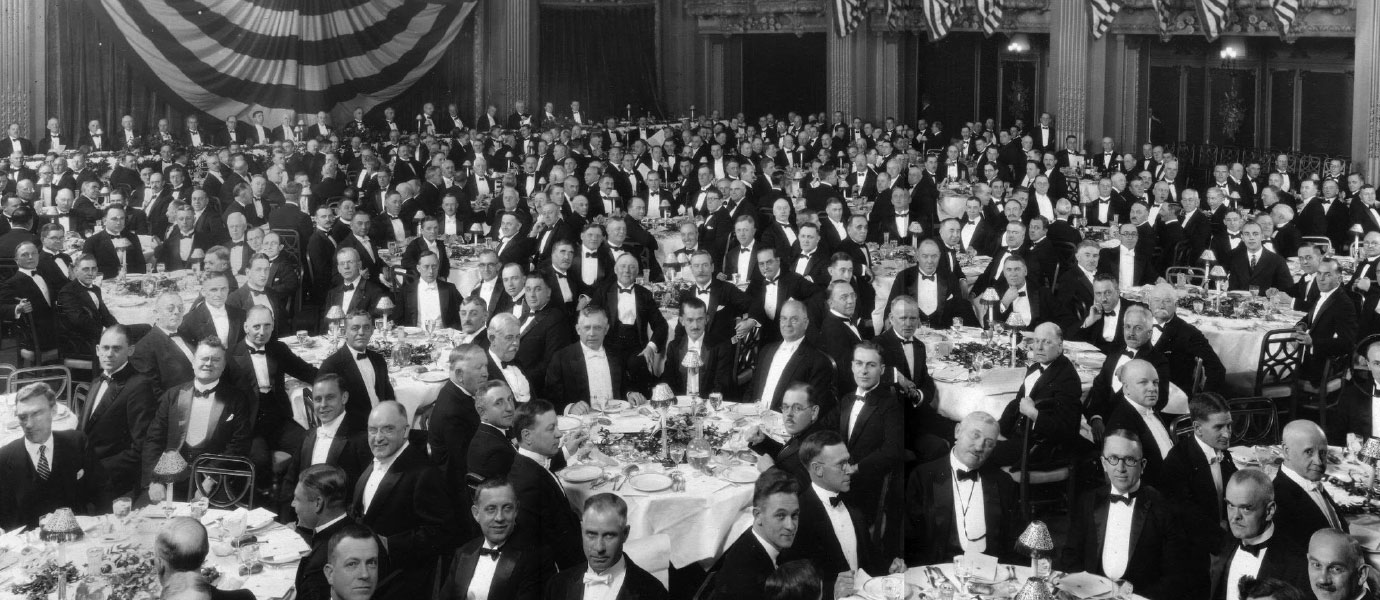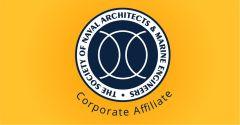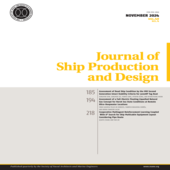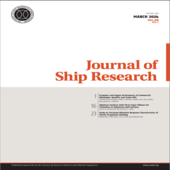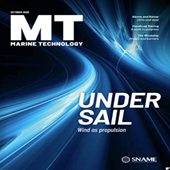Technical and research (T&R) | Bulletins and reports
A new Sustainability Panel (EC-16) formed under the SNAME T&R Program's Environmental Engineering Committee brings forth its first publication - A groundbreaking whitepaper on "Sustainable Shipping: What It Is and Why It Matters" by Dr. Thomas McKenney, shedding light on the critical role of sustainability in the maritime industry. This whitepaper explores the environmental, economic, and social dimensions of sustainability while addressing the challenges posed by shipping emissions, biodiversity loss, and climate change. The whitepaper also highlights the urgency of maritime decarbonization, sustainable shipping initiatives, and industry-wide collaboration to achieve net-zero emissions by 2050. As global trade continues to expand, this timely publication serves as a vital resource and is available to download at no charge.
The study of the motion of a rigid body through a fluid is considered as a general problem in the motion o rigid bodies under the action of gravity and hydrodynamic forces. This a choice of nomenclature for this field mist borrow from both rigid dynamics and fluid mechanics.
Like most problems in hydrodynamics, an exact theoretical solution of the equations of motion is available only for an idea fluid. However, as is well known, for small deviations from uniform linear motion, the equations of motion in a real fluid can linearized and solved in terms of a set of coefficients, which are determined either by theory or by experiment.
Frequently, rather than to determine the trajectory of a body, it suffices to obtain a measure of its stability. A body in a state of equilibrium is said to be stable if, when slightly disturbed from this state, it returns to it, with perhaps a slight change in position of path. Since there are various possible states of equilibrium, there are, correspondingly, various possible kinds of stability; these are defined in a subsequent section of this Bulletin.
Although the motion can be described adequately only with reference to some fixed coordinate system, it is shown in texts on dynamics that the equations of motion of a rigid body are expressed most conveniently in terms of a rectangular coordinate system moving with the body., the so-called body axes. Consequently, it has been necessary to introduce nomenclature for describing the orientation of the body axes relative to the fixed axes.
The present paper deals with the wave motion caused by a solid body of arbitrary shape, in steady, rectilinear, horizontal motion at a certain depth beneath the surface of a liquid. The forces acting on the solid body are also calculated, namely the general formulae for both the wave resistance and for the lift of the body. The usual assumptions in problems of this kind are taken as a basis: namely, the fluid's ideal, the only force acting on it is gravity, and that the fluid motion is established. Further, the waves caused by the motion of the body are assumed to be small. In this case the subsequent assumption is equivalent to the hypothesis that the body disturbing the flow is at a sufficient depth below the free surface.
In the present work, we consider the problem of the wave motion generated in a heavy incompressible fluid by oscillations of a body under the free surface of the fluid. We have already considered this problem for the two-dimensional case by applying a general method that we had developed. We now give the solution to this problem for the case of three-dimensional motion.
In problems of the seaworthiness of a ship the study of the oscillation of the ship has an important place; it is necessary for the explanation of the mechanism of the phenomenon as a whole in order in order that one may foresee and guide in a desirable direction the seagoing qualities of a ship being design.
The solution to the basic problems of ship oscillation is closely connected with no other less important problems of seaworthiness such as the wetness of a ship and its resistance when moving through waves.
The Resistance and Propulsion Compilation of Project II-2 embodies the preparation and printing of three sets of sheets containing summaries of model test data and related data useful in the design of ships and propellers. These three sets have the following titles:
The present paper may be regarded as a manual for the design of hydrofoils or airfoils from specifications on the pressure distributions, The design procedure employs the well-known theories of incompressible, inviscid, steady flow and conformal transformations. A profile design is begun by tentatively specifying the pressure distribution desired at selected angles of attack. These specifications which usually conflict with each other are reconciled so as to correspond to an existing but unknown profile. The coordinates of the section are then accurately and rapidly calculated. The purpose of this paper is to give a connected and detailed development of both theory and numerical procedure in the hope that this useful profile design method may find more general application.
